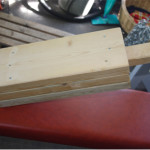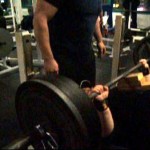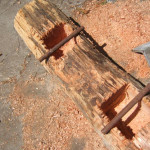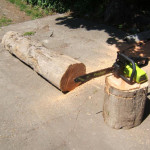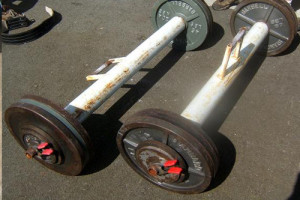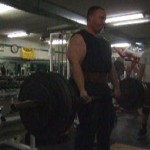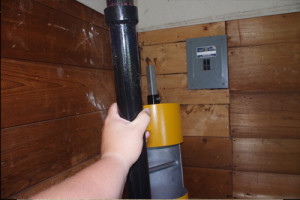Bench pressing is a lot of fun, there is something about the simplicity of getting underneath a crap load of weight and feeling it start to move upward. It is to me still the most primal and enjoyably lift in the gym.
I am not a bench press monster by any means. But I have been lifting long enough and with enough different lifters that I have learned some tips and tricks along the way. Here are some tips I have for building your bench press.
Don’t just press!
 Ok this is a funny one to start, but I remember getting ready for a provincial bench press championship, and as much as I was pressing, I was also deadlifting and squatting. Building strong legs improves your testosterone, building a strong back helps stabilize your bench. All muscles also have their opposing muscle, and when one is stronger and or shorter than the other, it can cause muscle imbalance and injury such as “swimmers shoulder”
Ok this is a funny one to start, but I remember getting ready for a provincial bench press championship, and as much as I was pressing, I was also deadlifting and squatting. Building strong legs improves your testosterone, building a strong back helps stabilize your bench. All muscles also have their opposing muscle, and when one is stronger and or shorter than the other, it can cause muscle imbalance and injury such as “swimmers shoulder”
Train some days light and explosive.
Many of our training days where not focused on hitting max numbers. Don’t get me wrong we did that too, but often our training consisted of a moderate weight, broken down into sets of 3 reps, done with as much speed and explosiveness as possible.  I would often use about 225lbs for this, of which I could reach about 30reps on a good day, however it was more about building those nerves that innervate the muscle cell. It is the reason people who start training increase strength in the first few months without increasing muscle mass… they are connecting new nerves.
I would often use about 225lbs for this, of which I could reach about 30reps on a good day, however it was more about building those nerves that innervate the muscle cell. It is the reason people who start training increase strength in the first few months without increasing muscle mass… they are connecting new nerves.
Get good spotters.
Ok obvious right? but if you really want to push limits having good spotters is very important. If you are going to do shirt work or training with boards I think having 3 spotters is critical. Having someone know the right time to help and the right time to let you push though the lift is so vital.

Vary your grip
Finding if you are more suited to a wide grip or a narrow grip is important. A wide grip emphasizes the shoulders more, a narrow grip the triceps. A wide grip also reduces the range of motion required to complete the lift. However a wide grip definitely puts more stress on the wrists, and I feel should not be done heavy without adequate wrist wraps. I was for a long time a narrow bench presser. It was not until I started forcing myself into a wider grip that I gained easily another 15-20lbs on my bench. However initially working with a wide grip caused my bench press to go down 30lbs or more for a little while. It takes some getting used to. In training utilizing a variety of grips is essential. Also be mindful if you are entering a powerlifting competition what their rules are in regards to max grip width.
Focus on your compound movements.

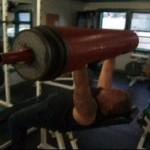 Incline Log lift
Incline Log liftWhen training for strength i see too many beginners doing set after set on small isolation exercises like bicep curls, or side lateral moments. I used to be one of them many years back. These exercise are not without value, and are important to keep muscle balance, but for improving overall strength your focus should be on large compound movements that engage multiple muscle groups such as rows, presses and squats. Try to think about using movements that complement goals like a big bench press. We used to love doing incline log presses for our triceps. It engaged our chest and shoulders as well and helped develop our pressing power. Just keep in mind not to over train this way. By this I mean doing 15 sets of narrow grip bench press a few days after your primary bench workout would not be ideal. Instead treat your arm or shoulder day as a complement to your harder more rigorous bench, deadlift or squat day.
Throw some variety into your training.
I have heard people say in training, to not look for ways around your purpose. Don’t focus on pushups, or cable crossovers for a bigger bench press, If you want a bigger bench press, then bench press, if you want a bigger deadlift then deadlift. I very much agree with this. If you are getting ready for a bench press competition for example, you had better be bench pressing like it was making you millions. That said, throwing some variety into you routine is also important for a number of reasons. First, outside of competitive training, doing the same exercises over and over month after month gets brutally boring. this can be overcome with pure willpower for a few years, but the same routine will eventually drive you away from an activity, no matter how much you enjoy it. The second reason is to shock your system into more growth. The whole biological reason your muscles are gaining strength is because your body perceives you doing a task beyond the capability of your body (hence micro tears in muscles stimulating adaptation by growth) and so your body tries to adapt to that movement.  Throwing in some machine work, or dumbbell work every so often will keep your body guessing and growing to adapt. Sometimes after switching your routine enough you will feel sore the next day akin to having started training after a long break. Finally bench pressing generally requires spotters, if you can’t for any reason have someone around to properly spot you, a using dumbbells or loading up a machine is a much safer option. Don’t bench press alone! I have heard of too many injuries in my time.
Throwing in some machine work, or dumbbell work every so often will keep your body guessing and growing to adapt. Sometimes after switching your routine enough you will feel sore the next day akin to having started training after a long break. Finally bench pressing generally requires spotters, if you can’t for any reason have someone around to properly spot you, a using dumbbells or loading up a machine is a much safer option. Don’t bench press alone! I have heard of too many injuries in my time.
Using chains, boards and bands

Powerlifters have been using these forever. Clipping chains to the end of the bar in order to incrementally increase the weight on the bar as the lift is executed. Bands attached to the bar do a similar job with increasing resistance. And using boards to stop the bar and certain points in the eccentric part of the lift (downward motion) helps sticking points. All these can be used to increase your bench, as well as other lifts. Utilizing chains on deadlifts work’s great. A few words of caution. Utilize spotters to hold the boards on your chest. Never try to attach them to you, it can end badly. Also use a very secure clip to add the chains to the bar. Speaking as someone who had a chain break away during a squat, it is more than a little dangerous. there are many website that sell proper chain clips that are designed just for that purpose.
Some training with boards



